4 Insect Life Histories
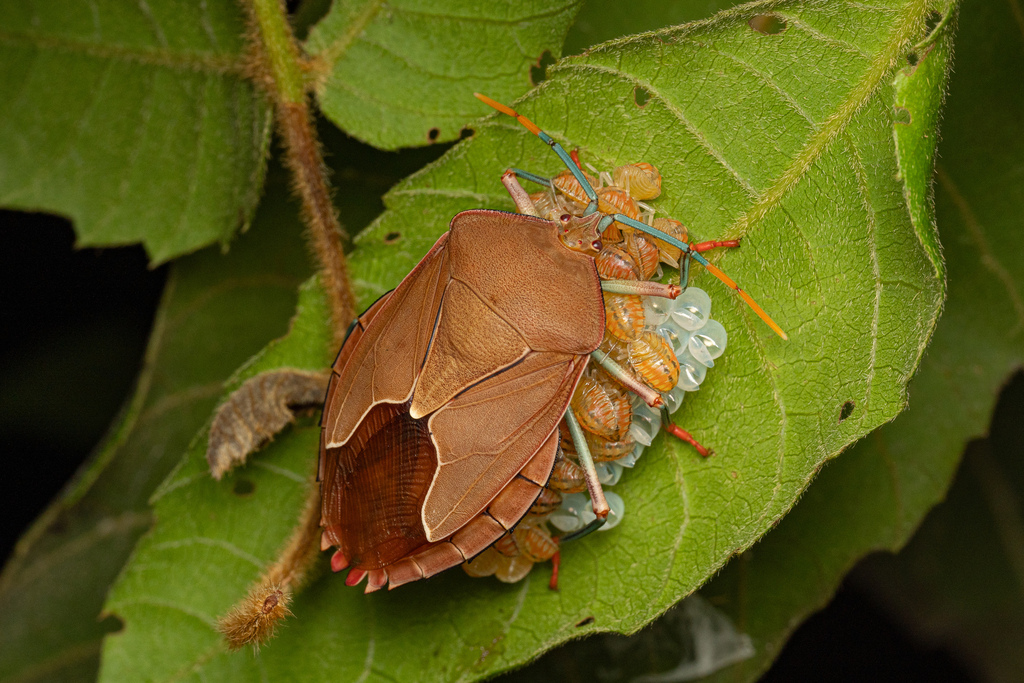
We continue the theme of Chapter 3 but rather than identifying modifications of the groundplan, we identify modifications in the development of insects; their life histories (or ontogeny).
THRD0023 012 (YouTube, 2m 34s):
Adult insects are (usually) the only stage that possess fully functional wings: the transition from an immature wingless stage to a mature adult is called metamorphosis. A fundamental division among insects is whether they are holometabolous or hemimetabolous. These different developmental approaches have impacted greatly on the way insects interact with their environment.
Learning Objectives
- Know the main types of metamorphosis
Introduction
One of the reasons for the success of insects is that they can fly. However, not all stages can fly, only the adult. Consequently the transition between the sub-adult and adult stage involves considerable growth and rearrangement of the body to accommodate the formation of the wings. This transition is called metamorphosis.
Remember from Chapter 2 that many orders of insects are within the infraclass Pterygota: they are winged. The pterygote insects can be further classified according to the mode of development of the wings. Most orders of pterygotes have wing buds that develop externally (Exopterygota). This appears to be the ancestral state for pterygotes, and therefore does not help to define a group of insects. In contrast, some insects have wings and genitalia that are internalised in the pre-adult stages. This derived trait defines the group called Endopterygota. This group used to be called Holometabola because it was thought to be defined by holometabolous development, but similar development also occurs in some of the other insects.
Holometaboly is undoubtedly a successful life strategy; it has been estimated that four orders of insects—the Hymenoptera, Coleoptera, Lepidoptera, and Diptera—include more than 45% of all known animal species.
- exopterygote (= outside wings) – wing buds develop externally
- endopterygote (= inside wings) – wings buds develop internally.
The instar is the name of the growth stage between moults. For example, midges have four larval instars as shown in the diagram below. It is important that we understand the terms for describing the life stages. The stadium is the period of time between moults. Immature stages are called nymphs or larvae. Usually “nymph” is used to refer to an immature hemimetabolous insect and “larva” refers to an immature holometabolous insect. In holometabolous insects, the quiescent phase is called the pupa. Common names include chrysalis (when referring to butterflies) and cocoon (refers to the protective structure surrounding the pupa; in moths, the caterpillar constructs it using silk excreted by glands).
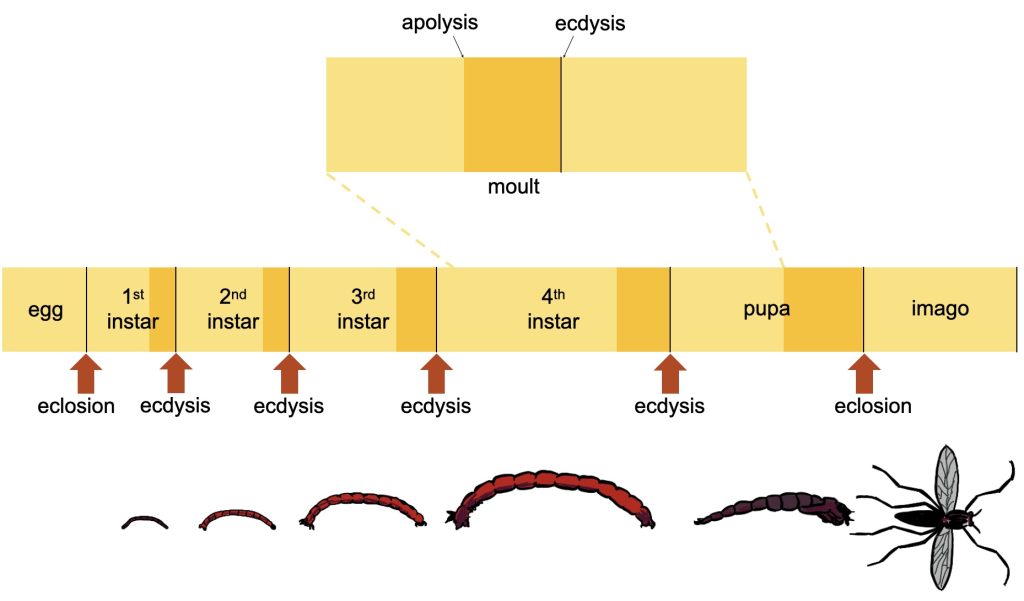
Insect Life Histories
Ametaboly and Prometaboly
THRD0023 013 (YouTube, 3m 08s):
The ancestral life-cycle. The hatchling resembles the adult. This condition is found in apterygote (wingless) insects, the silverfish (Zygentoma) and bristletails (Archaeognatha). The adults continue to moult after sexual maturity, making them different to the hemi- and holometabolous insects.
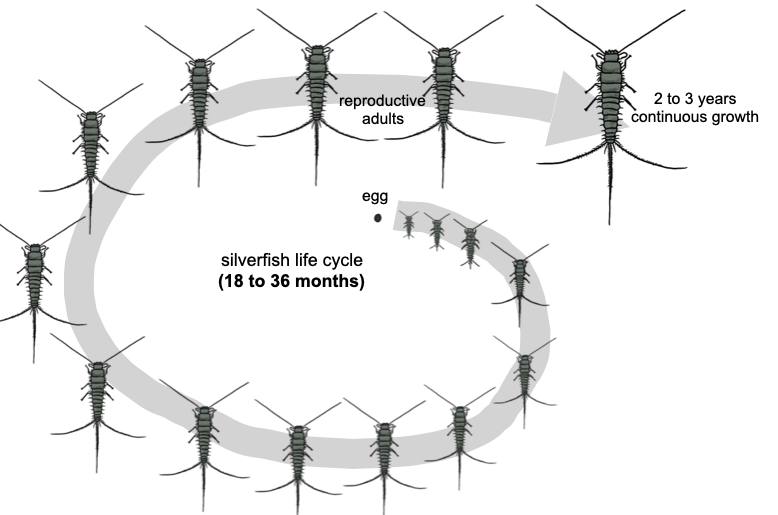
Prometabolous development is found only in the mayflies (Ephemeroptera). This unusual condition involves two winged stages, the adult and the penultimate instar, termed the subimago.
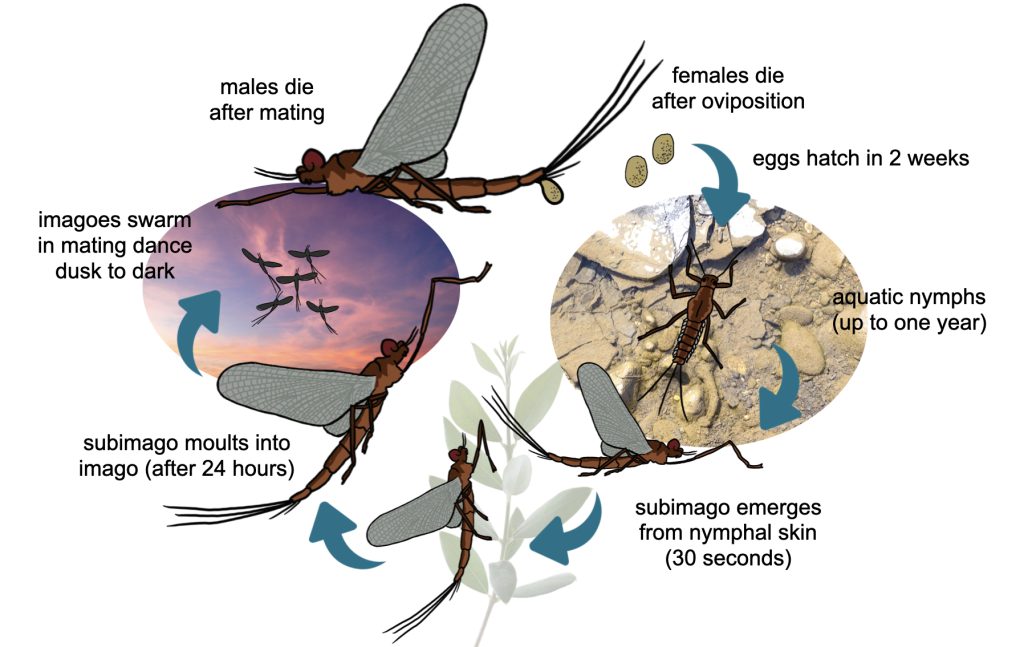
Hemimetaboly & HOLOMETABOLY
THRD0023 014 (YouTube, 3m 39s):
In hemimetabolous insects, wings develop gradually as external wing buds. They become fully-formed at the adult stage (in the imago). The immature stages are called called nymphs.
There are two types of hemimetabolous development:
- Adults and immatures (nymphs) have different lifestyles and different habitats, e.g. adults are terrestrial; immatures are aquatic. Therefore adults and nymphs often look quite different and may possess different structures e.g. nymphs have gills. Examples include dragonflies (Odonata), mayflies (Ephemeroptera), stoneflies (Plecoptera).
- Adults and immatures (nymphs) have similar lifestyles and habits and are terrestrial. Adults and nymphs look similar. Examples include the true bugs (Hemiptera), cockroaches (Blattodea), grasshoppers (Orthoptera) and preying mantids (Mantodea).
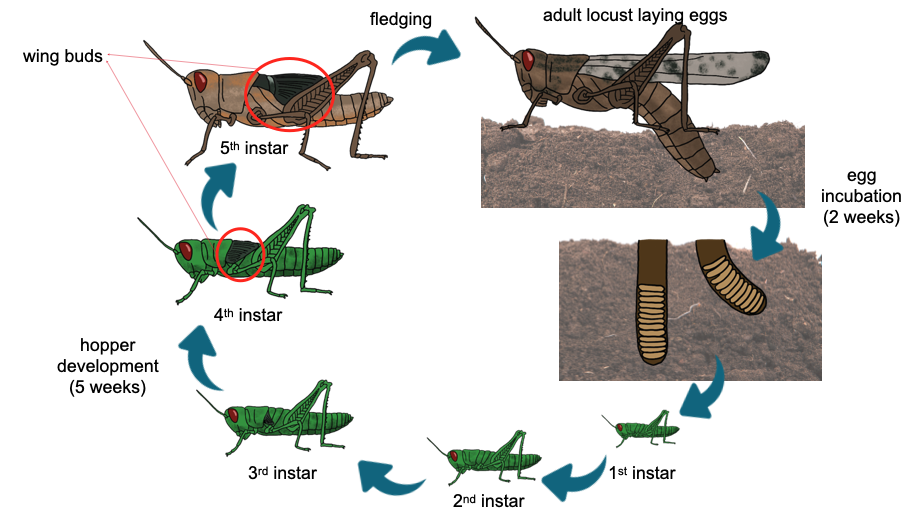
The most important difference between hemi- and holometabolous development is that holometabolous insects have a quiescent stage called the pupa. In the pupa the body form of the larva changes radically and the wings develop.
Three stages are present after the egg; the larval instars, the pupa and the adult.
- The larva grows from instar to instar. Primarily, only size changes between moults. Importantly, no external wing buds are seen in the larva. They grow internally in the form of imaginal disks.
- The pupa (penultimate instar) is generally inactive and concealed. Internally, histolysis of some larval tissues occurs and the new adult organs such as reproductive- and flight-related structures are developing internally.
- The adult (final instar) possesses functional wings (usually), and functional reproductive organs such as mature eggs or sperm.
Examples of holometabolous insects include lacewings (Neuroptera), butterflies, moths (both are Order Lepidoptera), wasps (Hymenoptera), beetles (Coleoptera), and flies (Diptera).
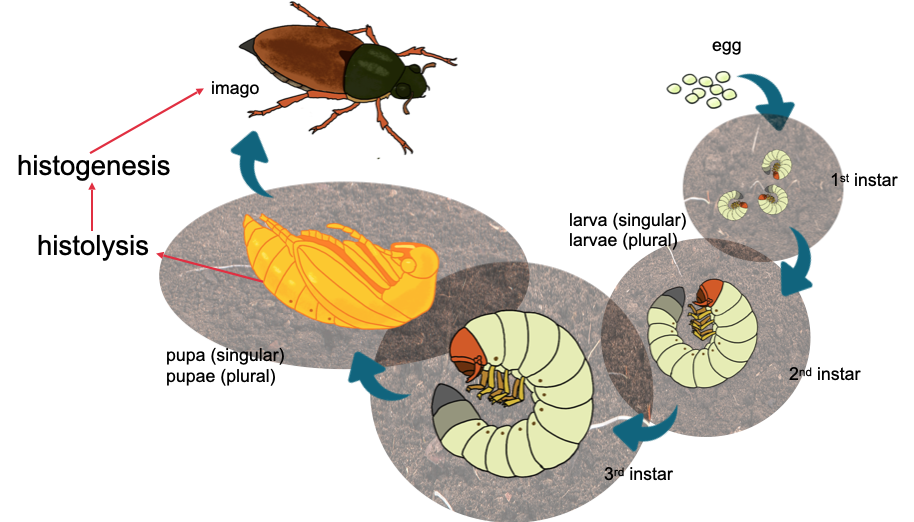
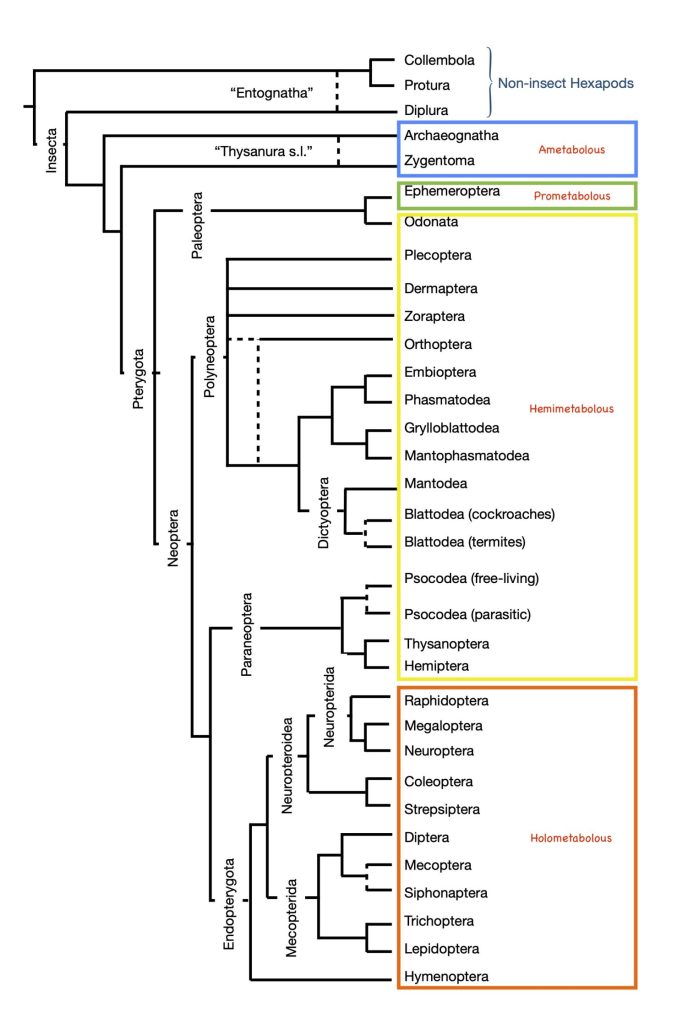
Within the Holometabola, the most basic form of pupation is seen in the group Neuropterida, which includes the orders Neuroptera, Raphidioptera and Megaoloptera. The pupa is not entirely inert and it doesn’t have the same mummy-like appearance as pupae you might be more familiar with such as in the Diptera and Lepidoptera.
The pupa in Neuropterida is exarate and decticous. Exarate means the appendages are free of the body, not stuck to it, so in some cases the pupa is mobile. Decticous means the pupal mandibles are articulated, so they can move and chew. The pharate adult, i.e. the late-stage pupa, is mobile and, in many species, it breaks out of a cocoon and wanders to find an appropriate surface to eclose into the adult. This amazing capability of a pupa to walk and orient belies our concept of pupae as a mummy-like, completely inert stage. The early-stage pupa is inert as it undergoes histolysis and formation of adult structures; the late-stage pupa has the adult structures in place internally and it is able to move around.
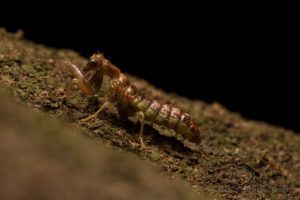
Past BIOL2205 student James Dorey discovered mass emergences of Mantispidae (Neuroptera) on a family Macadamia orchard in northern New South Wales. He recorded and photographed pharate adults emerging from underground and climbing tree trunks to undergo eclosion. He made a beautiful time-lapse movie of adult eclosion (see Chapter 6). Read the complete paper.
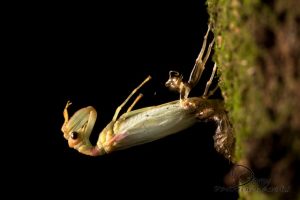
Evolution of Life Histories
It is likely that early in insects’ evolution, the immature stages resembled the adults, i.e. they were ametabolous. Read this article in Scientific American — it summarises a possible scenario for the evolution of holometabolous instars from the “pronymph” and gives a bit of interesting history about early ideas about metamorphosis.
Sociality in Insects
In Chapter 1, we discussed different aspects of the biology of insects that could be used to indicate that they are a successful group. The sheer number of individuals and species, their ecological breadth and geographic distribution are all characteristics that indicate successful invasion of land (terrestrialisation).
The social insects are some of most successful groups of insects; they are present in large numbers, they are present in many ecosystems and they are widely distributed across the globe. Some social insects such as termites are very important pests and, conversely, others such as bees are among the most valuable commercial species.
First, let’s define what we mean by sociality. Insects that show cooperative behaviours are regarded as being social. Eusocial insects (meaning truly social) show cooperative behaviours, partitioning of roles and concentration of reproductive effort on a subset of individuals. They are also referred to as colonial insects. The Hymenoptera have many eusocial groups; ants, bees and wasps. The termites, group Isoptera within order Blattodea, are also eusocial.
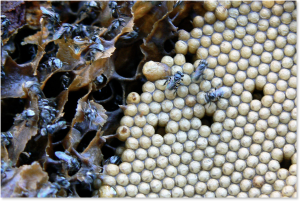
The specific traits of eusocial insects are:
- a caste system, meaning different individuals have different roles;
- cooperation in reproduction, meaning that individuals other than the parents help rear the young,
- overlapping generations in the colony.
Subsociality is more difficult to define. It is present in a wider range of taxa and has arisen independently in many groups. Examples of subsociality include insects that aggregate and communicate with one another and insects that show parental care.
Activities
Activity 4.1: Definitions of metamorphosis: Using dictionaries and other resources see if you can find two alternative definitions for metamorphosis. What other animal groups experience metamorphosis?
Activity 4.2: Differences in metamorphosis: Looking at the diagrams in the text, what differences can you see between hemimetabolous and holometabolous metamorphoses?
Activity 4.3: Wingless orders: Some orders of insects are wingless. Identify these orders and give reasons why you think they have become wingless.
Activity 4.4: Wing buds: Carry out a Google image search for cockroach. Some images will show adults, others nymphs. Can you distinguish between them? Can you see the wing buds of nymphs? Do the same search for jewel bugs. The adults might be harder to identify based on the presence of wings. Why?
Topic Review
Do you know…?
- The difference between a stadium and an instar?
- Reasons for the success of holometabolous insects How the circulatory system can interact with the respiratory system?
- Four types of metamorphosis
- The names of the juvenile and quiescent stages of insects
- A possible evolutionary scenario for the transition from hemi- to holo-metaboly?
- What eusociality means and the characteristics of eusocial insects.

